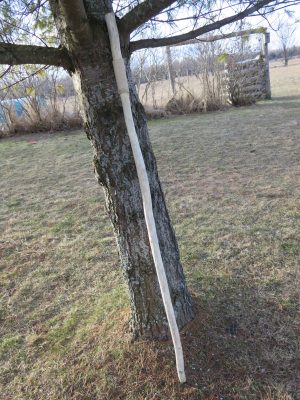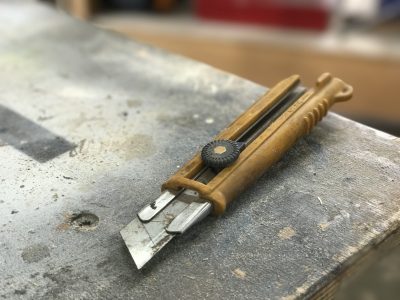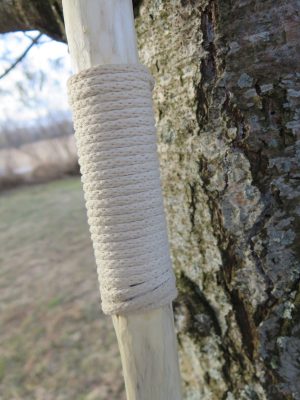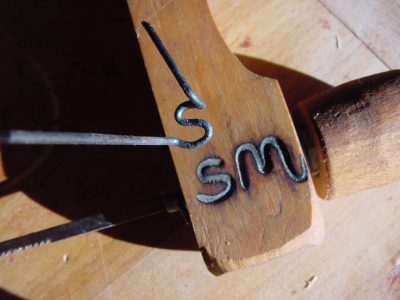UPDATED 23APR2020: I’m seeing more and more people walking with canes & walking sticks these days, but none of the factory-made, metal sticks look all that interesting to me. A home-made, wooden walking stick you whittle yourself is another matter. Even a simple one looks great, and it’ll connect you with the walking habit in a more hands-on way. Whittling can also be a lot of fun, even if you’ve never tried it before.

Much of the world is covered in the kind of saplings that make fabulous canes & walking sticks. Even if you live in a city, you can still get your hands on a trimmed limb of some kind. Poplar makes excellent walking sticks and poplar trees are one of the most common species across the country where I live in Canada. If prevalence of tree cover had counted for anything when they were choosing our national symbol, the poplar leaf would be on the Canadian flag, not the maple leaf as we have now. Maples and most hardwoods make decent walking sticks too, but heavier than poplar. Stay away from pine or spruce because of the sticky sap.
Find a straight sapling or branch that’s 2 1/2” to 3” at the thick end, saw it to 60” or 70” long for a full-size walking stick, then get ready to make shavings. If you’re cutting a sapling from an actual forest, choose one that’s growing close to neighbours. You’ll improve the forest by getting it out of the way.
Knives for Canes & Walking Sticks
What kind of whittling knife is best? As a beginner you’ll love those utility knives with the long, segmented blades you break to expose a fresh point. The best I’ve used for carving is the yellow-handled Olfa HB with its 1”-wide blade, like you see below. Don’t use any segment blade knife with a narrower blade. You could also use an ordinary jack knife, but you’ll have to be pretty good at sharpening to compete with the utility blade.

Fresh, moist bark is always easiest to remove, so whittle this off as soon as you have your wood. Hold one end of the cane or walking stick in your hand as you sit, with the other end angled down to rest on the ground. Set yourself up like this outdoors and it’ll save you from a lot of sweeping. Take long, even strokes downwards with your knife to remove strips of bark without going far into the wood. The only time you want to remove actual wood is when you’re levelling knots.
Drying Your Walking Stick
The nice thing about carving fresh wood is that it provides emotional incentive. The more bark you remove, the more bright, clean, pure looking wood you’ll expose. It’s addictive. With all bark removed, set the stick aside standing upright in a corner somewhere for 2 to 4 weeks to dry. The wood will be lighter in weight and better able to accept refined carving, but it may also be browner than it was before. This happens if white inner bark got left behind and dried. Whittle away this new brownness until you get down to nice, light wood. Whittle an angled edge around the top and bottom ends of your walking stick so the wood won’t splinter during use.
It’ll take a couple of months of sheltered storage for your walking stick to dry completely, but you can go ahead and wrap a rope handle grip on top, if you want. I buy sash cord from a hardware store for this. Soak it in water, tuck one end under the first wrap, continue wrapping to create a 5” or 6” long hand grip, then tuck the loose end under the final wrap and pull it tight. When the cord dries it’ll get even tighter.

Mark your initials somewhere on the cane or walking stick. The ones you see burned into the stick were made with two pieces of 1/16″ piano wire. I heated this wire with a propane torch, bent it to the shape of my initials, then heated again to brand the wood. You can see the full burning brand I made in action below, marking a wooden tool I made a long time ago.


Complete your cane or walking stick project by coating it with linseed oil or wipe-on poly. When it’s dry, grab your trusty walking companion whenever you head out for exercise. Expect compliments.